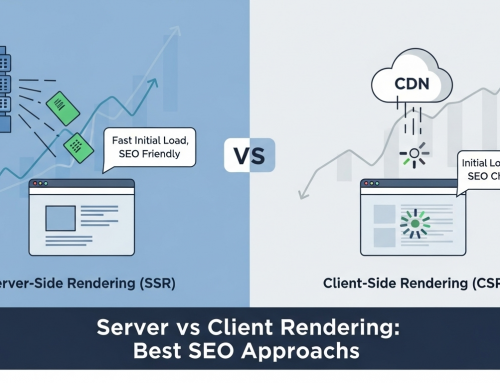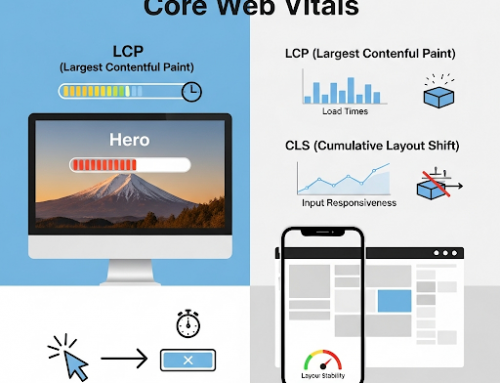Feeling overwhelmed by the ever-changing SEO landscape? You’re not alone. With algorithms evolving and new trends emerging, staying ahead can seem like a daunting task. But don’t worry—by understanding the core services and advanced techniques, you can effectively navigate these changes and boost your digital strategy.
In 2024, the top SEO services you should focus on include advanced keyword research, on-page optimization, technical SEO, local SEO, and content marketing. Each plays a crucial role in enhancing your online presence and driving traffic to your site.
Ready to dive deeper? Let’s explore how these services can be leveraged to give your digital strategy a powerful boost.
Understanding SEO in 2024
SEO is no longer just about sprinkling keywords throughout your content; it has evolved into a multifaceted strategy that requires a deep understanding of various elements and trends. As we navigate through 2024, the SEO landscape has continued to shift in response to changes in technology, user behavior, and search engine algorithms.
Key Changes and Trends in SEO for 2024
In 2024, SEO is shaped by several key changes and trends:
- AI and Machine Learning: Artificial intelligence (AI) and machine learning are increasingly integral to how search engines rank content. Google’s algorithms, such as BERT and MUM, now understand context better and can interpret user queries with greater precision. This means that content must be more relevant and contextually aligned with user intent.
- Search Intent and User Experience: The focus has shifted from just keywords to understanding and addressing search intent. Search engines prioritize content that provides genuine value and answers users’ questions comprehensively. Additionally, the user experience (UX) on your site—such as page load speed and mobile responsiveness—now plays a significant role in SEO rankings.
- Voice Search Optimization: With the rise of voice-activated devices, optimizing for voice search is becoming more crucial. Voice searches tend to be more conversational and question-based, which means your content needs to address these queries effectively.
- Video and Visual Content: Video content continues to grow in importance. Google now indexes video content more efficiently, making video SEO a key area to focus on. This includes optimizing video titles, descriptions, and incorporating relevant keywords.
- Local SEO: For businesses targeting local audiences, local SEO has become more sophisticated. Google My Business profiles and local citations play a significant role in improving visibility in local search results.
The Role of Search Engines and Algorithms in Shaping SEO Strategies
Search engines like Google are constantly refining their algorithms to deliver the most relevant results to users. This evolution impacts SEO strategies in several ways:
- Algorithm Updates: Google’s regular algorithm updates can drastically affect rankings. Staying informed about these updates and adjusting your strategy accordingly is crucial for maintaining and improving your search visibility.
- RankBrain and AI: RankBrain, Google’s AI component, helps process search queries and understand user intent. It factors in various elements such as relevance, quality, and engagement to determine rankings. Optimizing for RankBrain involves creating content that aligns with user intent and provides a valuable experience.
- Mobile-First Indexing: Google predominantly uses the mobile version of your site for indexing and ranking. Ensuring that your site is mobile-friendly and provides a seamless mobile experience is essential for SEO success.
- E-A-T (Expertise, Authoritativeness, Trustworthiness): Google places high importance on E-A-T when evaluating content quality. Demonstrating expertise, authoritativeness, and trustworthiness in your content can positively influence your rankings.
Core SEO Services to Focus On
To effectively boost your digital strategy in 2024, focusing on core SEO services is crucial. These services are the foundation of a robust SEO strategy, helping you improve visibility, drive traffic, and enhance user experience. Let’s delve into the essential components of SEO you should prioritize:
a. Keyword Research and Optimization
Importance of Advanced Keyword Research Tools
Keyword research is the bedrock of any successful SEO strategy. Advanced keyword research tools, such as Ahrefs, SEMrush, and Moz, provide invaluable insights into search volume, competition, and keyword trends. These tools help identify high-value keywords that align with your target audience’s search intent.
How to Identify and Target High-Value Keywords for 2024
In 2024, targeting high-value keywords involves more than just finding terms with high search volume. You need to focus on:
- Search Intent: Understand the intent behind keywords—whether users are looking for information, making a purchase, or seeking local services.
- Long-Tail Keywords: These are more specific phrases with lower competition but higher intent. They often result in better conversion rates.
- Competitor Analysis: Analyze the keywords your competitors are ranking for and identify gaps or opportunities to target.
b. On-Page SEO
Key On-Page Factors to Optimize
On-page SEO refers to the elements on your website that you can control to improve your rankings. Key factors include:
- Meta Tags: Craft compelling meta titles and descriptions that incorporate target keywords and entice users to click.
- Headers: Use header tags (H1, H2, H3) to structure your content and include relevant keywords.
- Content Quality: Create high-quality, informative content that answers users’ questions and addresses their needs.
Importance of Mobile-Friendliness and User Experience
With Google’s mobile-first indexing, ensuring your site is mobile-friendly is crucial. A responsive design, fast loading times, and a seamless navigation experience are essential for retaining visitors and improving your SEO performance.
c. Technical SEO
Enhancements in Technical SEO Practices
Technical SEO involves optimizing the backend of your site to improve its performance and crawlability. Key enhancements include:
- Site Speed: Faster loading times enhance user experience and are a ranking factor. Use tools like Google PageSpeed Insights to identify and fix issues.
- Mobile Optimization: Ensure your site performs well on mobile devices with responsive design and mobile-friendly features.
- Structured Data: Implement schema markup to help search engines understand your content better and enhance search result visibility.
Addressing Common Technical SEO Issues
Common technical SEO issues include:
- Crawl Errors: Regularly check for and fix crawl errors using Google Search Console.
- Broken Links: Identify and repair broken links to ensure a smooth user experience and prevent loss of link equity.
d. Local SEO
Strategies for Improving Local Search Visibility
Local SEO is essential for businesses targeting local customers. Key strategies include:
- Google My Business: Optimize and regularly update your Google My Business profile to improve visibility in local search results and Google Maps.
- Local Citations: Ensure consistent NAP (Name, Address, Phone number) information across local directories and review sites.
- Local Keywords: Incorporate location-based keywords into your content and meta tags to attract local search traffic.
e. Content Creation and Marketing
Developing High-Quality, Engaging Content for SEO
Content is king, and creating high-quality, engaging content is fundamental to SEO success. Focus on:
- Relevance: Address topics and queries relevant to your audience.
- Value: Provide in-depth, actionable insights that offer real value.
- Engagement: Use compelling visuals, infographics, and interactive elements to keep users engaged.
Content Marketing Strategies that Align with SEO Goals
Effective content marketing strategies include:
- Content Calendar: Plan and schedule your content to ensure consistency and alignment with SEO goals.
- Promotion: Promote your content through social media, email marketing, and other channels to drive traffic and build backlinks.
Leveraging Advanced SEO Techniques
As SEO continues to evolve, integrating advanced techniques into your strategy can significantly enhance your online visibility and performance. In 2024, staying ahead means embracing innovations and optimizing beyond the basics. Here’s how you can leverage advanced SEO techniques to stay competitive:
a. AI and Machine Learning in SEO
How AI is Changing the SEO Landscape
Artificial Intelligence (AI) and Machine Learning (ML) are revolutionizing SEO by enabling search engines to understand content and user intent more deeply. AI-driven algorithms like Google’s BERT and MUM analyze context and nuances in user queries, enhancing search results’ relevance.
Practical Applications of AI for SEO Optimization
- Content Creation: AI tools like GPT-4 can assist in generating high-quality, relevant content tailored to user intent.
- Personalization: Use AI to analyze user behavior and personalize content recommendations, improving engagement and conversion rates.
- Predictive Analysis: Implement AI for predictive analytics to anticipate trends and adjust your SEO strategy proactively.
b. Voice Search Optimization
The Growing Importance of Voice Search
With the rise of voice-activated assistants like Siri, Alexa, and Google Assistant, optimizing for voice search has become essential. Voice searches are often more conversational and question-based, which requires a different approach compared to traditional text-based searches.
Techniques for Optimizing Content for Voice Search
- Conversational Keywords: Incorporate natural, conversational phrases and long-tail keywords that reflect how people speak.
- Featured Snippets: Aim to optimize content for featured snippets, as they often appear in voice search results.
- Local SEO: Voice searches are frequently local, so optimize your content for local queries and ensure your Google My Business profile is up-to-date.
c. Video SEO
The Role of Video Content in SEO
Video content is increasingly influential in SEO, providing a dynamic way to engage users and improve rankings. Videos can drive traffic, enhance user experience, and boost your site’s visibility in search results.
Best Practices for Optimizing Videos for Search Engines
- Video Titles and Descriptions: Use relevant keywords in video titles and descriptions to improve search visibility.
- Transcripts and Captions: Provide transcripts and captions to make your videos accessible and indexable by search engines.
- Thumbnails: Create engaging thumbnails that encourage clicks and improve video performance in search results.
d. Leveraging Schema Markup
What is Schema Markup and Its Benefits
Schema markup is a type of structured data that helps search engines understand the content of your site better. By using schema markup, you can enhance your search listings with rich snippets, improving visibility and click-through rates.
How to Implement Schema Markup Effectively
- Identify Key Pages: Apply schema markup to important pages such as product pages, articles, and local business listings.
- Use Schema.org: Follow guidelines from Schema.org to implement the correct types of markup.
- Test and Validate: Use tools like Google’s Structured Data Testing Tool to validate your schema implementation and ensure it’s correctly applied.
e. Enhancing User Experience (UX)
Why UX Matters for SEO
User experience (UX) is a crucial factor in SEO. A positive UX not only helps retain visitors but also signals to search engines that your site is valuable and relevant. Key aspects include site navigation, design, and interaction.
Strategies to Improve UX for Better SEO
- Mobile Optimization: Ensure your site is fully responsive and provides a seamless experience across devices.
- Site Speed: Optimize your site’s loading times to reduce bounce rates and improve user satisfaction.
- Navigation and Accessibility: Design intuitive navigation and ensure your site is accessible to all users, including those with disabilities.
f. Advanced Link Building Techniques
The Importance of Quality Backlinks
Backlinks remain a critical ranking factor in SEO. However, the focus has shifted from quantity to quality. High-quality, authoritative backlinks can significantly boost your site’s credibility and ranking.
Effective Link Building Strategies
- Guest Blogging: Contribute high-quality content to reputable sites in your industry to earn valuable backlinks.
- Broken Link Building: Identify broken links on other sites and offer your content as a replacement.
- Content Partnerships: Collaborate with influencers or industry experts to create content that attracts natural backlinks.
By integrating these advanced SEO techniques into your strategy, you’ll be well-positioned to leverage the latest trends and technologies, ensuring your digital presence remains strong and competitive in 2024.
Measuring and Analyzing SEO Success
To ensure that your SEO efforts are effective and delivering the desired results, it’s essential to measure and analyze your performance regularly. This involves tracking key metrics, using the right tools, and making data-driven adjustments to optimize your strategy. Here’s how you can effectively measure and analyze your SEO success in 2024:
a. Key Metrics to Track
Important SEO Metrics and KPIs to Monitor
- Organic Traffic: Measure the amount of traffic coming from search engines. An increase in organic traffic indicates that your SEO efforts are driving more visitors to your site.
- Keyword Rankings: Track the positions of your target keywords in search engine results pages (SERPs). Monitoring keyword rankings helps assess the effectiveness of your keyword optimization strategies.
- Bounce Rate: Analyze the percentage of visitors who leave your site after viewing only one page. A high bounce rate may signal issues with content relevance or user experience.
- Conversion Rate: Measure the percentage of visitors who complete desired actions, such as making a purchase or filling out a form. A higher conversion rate indicates that your site is effectively engaging and converting users.
- Backlinks: Track the number and quality of backlinks pointing to your site. A healthy backlink profile contributes to better search engine rankings and domain authority.
- Page Load Speed: Monitor your site’s loading times using tools like Google PageSpeed Insights. Faster load times improve user experience and can positively impact SEO.
Tools for Tracking and Analyzing SEO Performance
- Google Analytics: Provides comprehensive data on traffic sources, user behavior, and conversions.
- Google Search Console: Offers insights into search performance, indexing issues, and keyword rankings.
- SEMrush/Ahrefs/Moz: These tools help track keyword rankings, analyze backlinks, and evaluate overall SEO performance.
b. Adjusting Strategies Based on Data
How to Use Data to Refine and Improve Your SEO Strategy
- Identify Trends and Patterns: Analyze data to spot trends and patterns in user behavior, traffic sources, and keyword performance. Use these insights to adjust your content and optimization strategies.
- A/B Testing: Conduct A/B tests to compare different versions of your content or landing pages. This helps determine which variations perform better and drives more conversions.
- Content Performance: Assess the performance of your content by analyzing metrics such as page views, time on page, and engagement rates. Optimize underperforming content to better meet user needs.
- Technical Issues: Use tools like Google Search Console to identify and fix technical issues, such as crawl errors or broken links, that may affect your SEO performance.
- Competitor Analysis: Regularly analyze your competitors’ SEO strategies and performance. Identify areas where you can improve or differentiate your own strategy to gain a competitive edge.
Staying Ahead of the Competition
In the ever-evolving world of SEO, staying ahead of the competition requires a proactive and strategic approach. Understanding your competitors’ strategies, continuously improving your own, and adapting to new trends are crucial for maintaining a competitive edge. Here’s how you can stay ahead in 2024:
a. Competitive Analysis
Techniques for Analyzing Competitors’ SEO Strategies
- Keyword Analysis: Use tools like SEMrush, Ahrefs, or Moz to identify the keywords your competitors are ranking for. Analyze their keyword strategies to uncover opportunities or gaps that you can exploit.
- Backlink Analysis: Examine the backlink profiles of your top competitors. Identify high-quality backlinks they have acquired and consider strategies to earn similar links or target sites that link to them.
- Content Analysis: Review the content your competitors are producing. Assess its quality, relevance, and engagement levels. Identify content gaps and opportunities where you can offer better or more comprehensive information.
- Technical SEO Audit: Conduct a technical SEO audit of your competitors’ sites. Analyze aspects like site speed, mobile-friendliness, and URL structure. Use this information to enhance your own technical SEO practices.
- User Experience (UX) Evaluation: Evaluate the user experience on your competitors’ websites. Look at navigation, design, and overall usability. Identify areas where you can improve your site’s UX to offer a superior experience.
How to Leverage Competitive Insights for Your Own Advantage
- Fill Content Gaps: Use insights from competitor content analysis to create high-quality content that addresses topics or questions they may have missed.
- Improve On-Page Optimization: Apply insights from competitor keyword and on-page optimization strategies to enhance your own content and meta tags.
- Build High-Quality Backlinks: Target similar backlink sources as your competitors and focus on earning authoritative and relevant backlinks to boost your domain authority.
b. Continuous Learning and Adaptation
Importance of Staying Updated with SEO Trends
The SEO landscape is dynamic, with frequent changes in algorithms, user behavior, and technology. Staying updated with the latest trends and developments is essential to adapt your strategy effectively.
Resources and Communities for Ongoing SEO Education
- Industry Blogs and Websites: Follow authoritative SEO blogs such as Moz, Search Engine Journal, and Neil Patel for the latest insights and updates.
- SEO Forums and Communities: Participate in forums and online communities like Reddit’s r/SEO, SEO Chat, or WebmasterWorld to exchange ideas and learn from industry experts.
- Webinars and Conferences: Attend SEO webinars, workshops, and conferences to gain knowledge from leading professionals and network with peers.
- Online Courses and Certifications: Enroll in SEO courses from platforms like Coursera, Udemy, or Google Digital Garage to enhance your skills and stay updated with best practices.
Implementing a Continuous Improvement Plan
- Regular Reviews: Schedule regular reviews of your SEO performance and strategies. Assess what’s working well and what needs improvement based on current data and trends.
- Experimentation: Don’t be afraid to experiment with new techniques or strategies. Testing different approaches can reveal valuable insights and help you discover new opportunities.
- Feedback Loop: Create a feedback loop where you continuously gather data, analyze results, and adjust your strategies accordingly. This iterative process helps you stay agile and responsive to changes in the SEO landscape.
Conclusion
As we advance through 2024, the landscape of SEO is more dynamic and competitive than ever. To thrive, it’s crucial to integrate a range of core and advanced SEO techniques into your strategy while continually measuring and adapting based on performance data.
By focusing on essential services such as keyword research, on-page optimization, technical SEO, local SEO, and content marketing, you lay a strong foundation for improving your search engine visibility. Embracing advanced techniques like AI, voice search optimization, and video SEO further enhances your ability to connect with users and stand out in search results.
Moreover, effective measurement and analysis of your SEO efforts ensure that you make data-driven decisions, refine your strategies, and address any issues that arise. Keeping an eye on your competitors and staying up-to-date with industry trends is equally important for maintaining a competitive edge.
In a world where SEO is constantly evolving, staying ahead of the curve requires a commitment to ongoing learning and adaptation. Leverage the resources available, embrace new opportunities, and continuously optimize your approach to drive sustainable success in your digital strategy.
By implementing these strategies and maintaining a proactive mindset, you’ll be well-positioned to achieve your SEO goals and enhance your online presence throughout 2024 and beyond.






